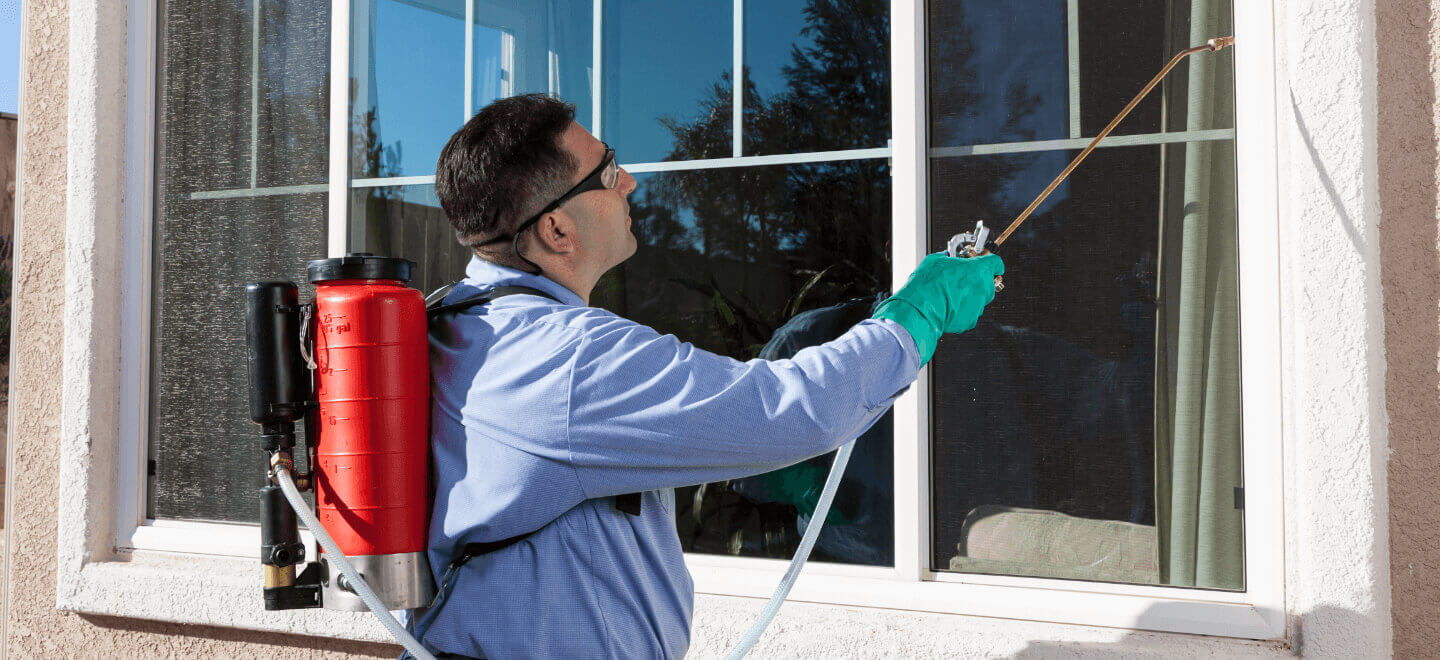A1 Charlotte Pest Control Companies - Your Neighborhood Pest Professionals
Wiki Article
Bed Pest Therapy Breakdown: Comparing Chemical Vs. Non-Chemical Solutions
In the realm of parasite control, specifically when taking care of the relentless concern of bed bugs, the selection between chemical and non-chemical treatment remedies can be a critical one. Both techniques offer unique benefits and drawbacks, influencing elements such as performance, safety and security factors to consider, and overall expense. By analyzing the nuanced information of each method, a clearer understanding of which path to pursue in attending to a bed insect invasion can be achieved.Effectiveness of Chemical Therapies
Chemical therapies for bed bug infestations have actually been extensively recognized for their rapid and potent efficiency in eliminating these pests. When taking into consideration the performance of chemical therapies, it is critical to recognize that they can provide a fast and detailed solution to a bed insect problem. Specialist pest control operators commonly rely upon insecticides to target bed insects at numerous phases of their life cycle, consisting of nymphs, adults, and eggs. These chemicals normally work by interrupting the bed insects' nerves, causing paralysis and eventual death.Moreover, chemical therapies have the benefit of providing recurring effects, implying that they can remain to get rid of bed pests also after the first application. This recurring activity is specifically beneficial in combating any possible re-infestations. Furthermore, the rapid action of chemical therapies can bring relief to individuals facing serious bed bug infestations, permitting them to reclaim control of their living rooms swiftly.
Safety Interest In Chemical Solutions
One vital aspect that calls for careful factor to consider when making use of chemical services for bed insect therapy is ensuring the safety and security of residents and the setting. Exposure to specific chemicals utilized in bed bug therapies can lead to respiratory system issues, skin inflammation, or various other negative reactions, particularly in individuals with pre-existing problems or level of sensitivities.In addition, the environmental influence of chemical options is another substantial factor to consider. Some chemicals utilized in bed bug therapies may be unsafe to beneficial insects, wildlife, and ecological communities if they seep right into the soil or water systems. It is important to utilize chemical treatments judiciously, adhering to safety guidelines, and considering less hazardous alternatives to alleviate these threats and ensure the risk-free and efficient management of bed pest problems.
Benefits of Non-Chemical Strategies
Thinking about the possible security problems and environmental effect connected with chemical solutions for bed insect therapy, exploring non-chemical methods presents an encouraging choice with several distinctive advantages. Non-chemical therapies are ecologically friendly, as they do not contribute to air or water pollution, making them a lasting option for parasite control.Furthermore, non-chemical remedies can be read this efficient in targeting bed insects, including hard-to-reach locations where chemical therapies may not permeate. Methods such as warm treatment, vacuuming, heavy steam cleansing, and mattress coverings offer extensive eradication without the use of harmful chemicals. Moreover, non-chemical methods can be less turbulent, needing minimal preparation and permitting for quicker reentry into treated areas. In general, opting for non-chemical bed insect treatment approaches not only prioritizes security and environmental management yet additionally guarantees thorough and reliable insect control.
Limitations of Non-Chemical Treatments

In addition, try here non-chemical treatments often require several applications to attain successful eradication. This can be taxing and may not always guarantee complete removal of all bed insects and their eggs, specifically in hard-to-reach or hidden places.
Moreover, the success of non-chemical therapies heavily counts on correct execution and thoroughness, which can be testing for people without expert experience. Insufficient application of non-chemical techniques may result in incomplete eradication, causing consistent problems and the requirement for added treatments.
Therefore, while non-chemical treatments have their advantages, it is necessary to recognize these constraints and consider them when establishing one of the most efficient method for handling bed pest infestations.
Price Comparison: Chemical Vs. Non-Chemical Options
Given look at this now the restrictions linked with non-chemical therapies, a crucial aspect to evaluate in the context of bed bug monitoring is the expense contrast between chemical and non-chemical alternatives. In contrast, non-chemical treatments like warmth therapy or steam can be more costly, with costs ranging from $1,000 to $6,000 for an entire home. While the first price of chemical treatments may seem lower, numerous therapies might be required to completely get rid of the problem, possibly enhancing the overall expense.Final Thought

Thinking about the potential safety and security problems and ecological influence connected with chemical remedies for bed bug treatment, exploring non-chemical strategies provides an appealing choice with several distinct advantages.Given the restrictions connected with non-chemical treatments, a crucial aspect to examine in the context of bed insect management is the expense contrast in between chemical and non-chemical alternatives. In comparison, non-chemical treatments like warmth treatment or steam can be much more expensive, with costs ranging from $1,000 to $6,000 for an entire home. While the initial cost of chemical treatments may seem lower, multiple treatments might be required to completely eliminate the infestation, potentially raising the total expense.In verdict, when contrasting chemical and non-chemical bed pest therapy choices, it is essential to think about performance, safety and security, advantages, constraints, and cost.
Report this wiki page